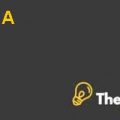Introduction
A special dividend was paid to the shareholders of the company when Sealed Air Corporation borrowed the total common stock for a value of 90% of its market value. This was a program which was basically initiated by the management of the company for improving the product quality and improving the efficiency of the manufacturing processes of the company. The leveraged recapitalization was used as a watershed event and this was done successfully and purposefully by the management of the company.
Many internal changes occurred as a result of this and this had also disrupted the status quo of the company. Some of the significant changes that had taken place as a result of this were basically the reorganization of the capital budgeting process and manufacturing, changing the compensation systems of the company and forming new objectives for Sealed Air Corporation. The main purpose of this case is to set the context in which it could be easily explored that how most of the financing decisions that are taken by the management of the company impact upon the value of the firm, management decision making and organizational structure.
A number of concepts are also analyzed in this case study which include high leverage disciplinary role, value of the firm, impact on the prices of the stocks and the concept of free cash flow. When the leveraged recapitalization program was initiated, the management of the company had a range of alternatives available to utilize the cash that was generated. The range of significant alternatives available to the management of the company were managing a portfolio of securities, increasing the regular dividend for the company, buying another company and launching a new capital expenditure program for the company however, the management chose the option of increasing the dividend for its equity holders and offering them $40 dividend per share.
Literature Review & Context Setting
Leverage recapitalization is one of the newest concepts and under this, the management of the company borrows excessive debt to pay excess pay out to the shareholders of the company. The debt that is borrowed by the management of the company is borrowed against the company’s future free cash flows. The debt level of the company is significantly increased and the company remains publicly traded. A sample of 27 firms had been analyzed by Gupta and Rosenthal (1991) that had undergone leveraged recapitalization and it had been observed in those companies that their debt to total capital ratio had increased from 22% to 67% when they had undergone the leveraged recapitalization.
Furthermore, between the periods of 1984 to 1988, the median total debt to total assets ratio of the companies had increased from a ratio of 45% to 86% for the 39 leveraged recapitalization that had taken during this period. Also, the value of the payout out on the basis of the pre recap market value of equity has also been found to be 60% which was found in the study that was conducted by the Handa and Radhakrishnan (1991) report for 42 companies that had undergone leveraged recap between the period of 1985 to 1989. The cash is distributed to the shareholders of the company as a special onetime dividend. Also exchange offer or a share repurchase could also take place.
Sealed Air Corporation’s Leveraged Recapitalization Case Solution
The managerial equity ownership is significantly increased after the leveraged recap takes place. The studies have shown that the insider ownership of the management increases by about 3 times to 2 times. According to Denis and Denis (1993), the average ownership for the employees, directors and officers of the company range from 6% to 15%. In the previous period, the leveraged recap was used as a defense by the management of the companies against the threats of the hostile takeovers. At the investor level a tax liability is triggered by the leveraged recap.
The structure of the payout that is paid to the shareholders of the company determines the tax. The special dividend is paid to the shareholders of the company from the retained earnings of the company and the dividend is taxed in the same way as a normal dividend is taxed. In case the special dividend that is paid to the management of the company is more than the retained earnings of the company, then that is treated as a capital gain, Denis (1990). In other words, it is also treated as the return on capital by the management of the company. In case share repurchase takes place, then the entire distribution is treated as the capital gain by the company............
This is just a sample partial case solution. Please place the order on the website to order your own originally done case solution.












